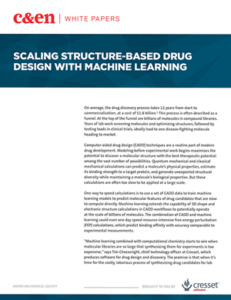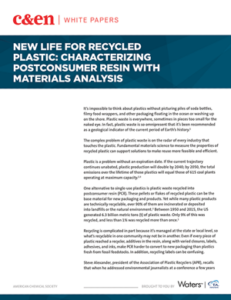White papers are a powerful tool science marketers can use to drive inbound leads. Great white papers tell your audience how brands solve problems and — most importantly — why it matters to them. White papers are an investment of time and research, but they can drive high-quality leads well past their publication dates with the right strategy. But not all white papers are created equal. We examined high-performing white paper examples (those that over-performed lead goals by at least 3x) to understand what made them so successful.
High-Performing Science White Paper Examples (and What They Have in Common)
For every white paper that becomes a high-performing asset, countless others underperform expectations and even fail to make back the money invested in their creation. Sometimes this is because the white paper itself is not aligned with audience needs — but it can also be because the distribution plan was lacking, leaving high-quality work out to dry.
Here’s what we learned from examining successful white papers and what they all have in common.
1. Know and appeal to audiences that matter
The key to creating a high-performing white paper is first to define your audience, as well as their pain points and challenges. A white paper that drives leads includes not only why the solution matters to the industry but how it solves a specific problem for the reader. Building a white paper that appeals to your readers requires listening to your audience and building trust with that group—goals that need audience research to accomplish. This research will ensure that your framing speaks directly to what matters to your reader.
In this white paper example from Cresset, C&EN BrandLab took a forward-thinking idea—using AI in drug discovery—and grounded the vision in audience research, relying on expert voices and trends of the moment to give the idea context. C&EN BrandLab spoke to stakeholders—both internal at Cresset as well as industry experts—to define the audience that matters for this white paper, and to gain knowledge of their pain points, challenges, and interests. Though a consumer research study was not used in the planning of this white paper, approaching audience research through 1:1 discussions proved fruitful (and can be an excellent tactic if resources are limited or when a consumer research study might not be possible).
Based on these discussions, the team at C&EN BrandLab realized that they needed to take a two-pronged approach to discussing the topic at hand:
- First, the white paper needed to explain the stakes for solving this problem in terms of worldwide impact—faster development of drugs is a net good, and using AI in drug discovery can aid in this process.
- Next, the focus was narrowed to discuss what was specifically at stake for the intended audience—AI has the potential to speed up time-consuming, but informative, calculations for early stage drug discovery.
With this editorial approach defined, the team was able to more clearly discuss the topic and proposed solutions. The white paper explains the current state of computer-aided drug design (CADD), the impact that accelerated speed driven by machine learning-enabled CADD could have on pharmaceutical development, and the concrete steps needed to operationalize the solution. In addition, research highlighted within the white paper shows that the entire field is working in this direction, indicating that this solution is on the way. This framing clarifies not only how the solution builds off of existing technology, but importantly, how machine learning-enabled CADD could address current pain points for key stakeholders.
2. Provide actionable takeaways
Reading an excellent white paper feels more like learning something new than being marketed to. You get to give your audience a new perspective on your industry or the problem you’re solving, highlighting the magnitude of your solution’s impact on the field—and providing something of value for the audience to hopefully put into use.
This white paper example from TA Instruments highlights the importance of including valuable takeaways readers can immediately apply to their business. The white paper first provides research emphasizing the urgency of solving the plastic waste problem. From there, it outlines concrete steps scientists can take to shift how they view the utility of recycled mixed plastic. This includes:
- Introducing technology (e.g. instruments for standard materials analysis) that scientists can use to obtain information that helps them counteract and manage variation in recycled plastic
- Providing proof points for why utilizing recycled plastic is challenging and how managing variation is a solution to some of the challenges
The efforts resulted in a high-performing asset that could be used as a resource for many in the scientific industry working on this problem— introducing the science of a real-world challenge and offering a readily available solution to enact.
3. Have a clear and targeted distribution strategy
While defining an audience and creating something of value to them are important, there is little truth to the idea that “if you build it, they will come.” White papers need strategic distribution plans that find and engage their target audiences and clearly emphasize the asset’s value to that audience. Importantly, these distribution plans should think well beyond the initial launch moment to get the most ROI from a white paper. Beyond where they plan to distribute the asset itself, marketers should think about how to deconstruct and repurpose specific elements of the white paper—graphics, key research findings, infographics or other snippets that could serve as social media cutdowns, for example—and promote across channels to continue to drive readers back to the white paper.
Scheduling distribution in an editorial calendar is a good first step to ensure promotion doesn’t fall by the wayside. White papers can get even more traction when promoted alongside a relevant event or story. For example, an infographic on plastic types and their risks could be tied to the news of recycling legislation or discoveries like this story on plastics in our bodies.
Key takeaways for creating high-performing white papers
If you’re looking for a partner to help create white papers that generate leads, talk to the experts at C&EN BrandLab. We’ll show you how white papers can help drive brand and solution awareness. Contact us for a consultation to meet your lead generation goals.




















